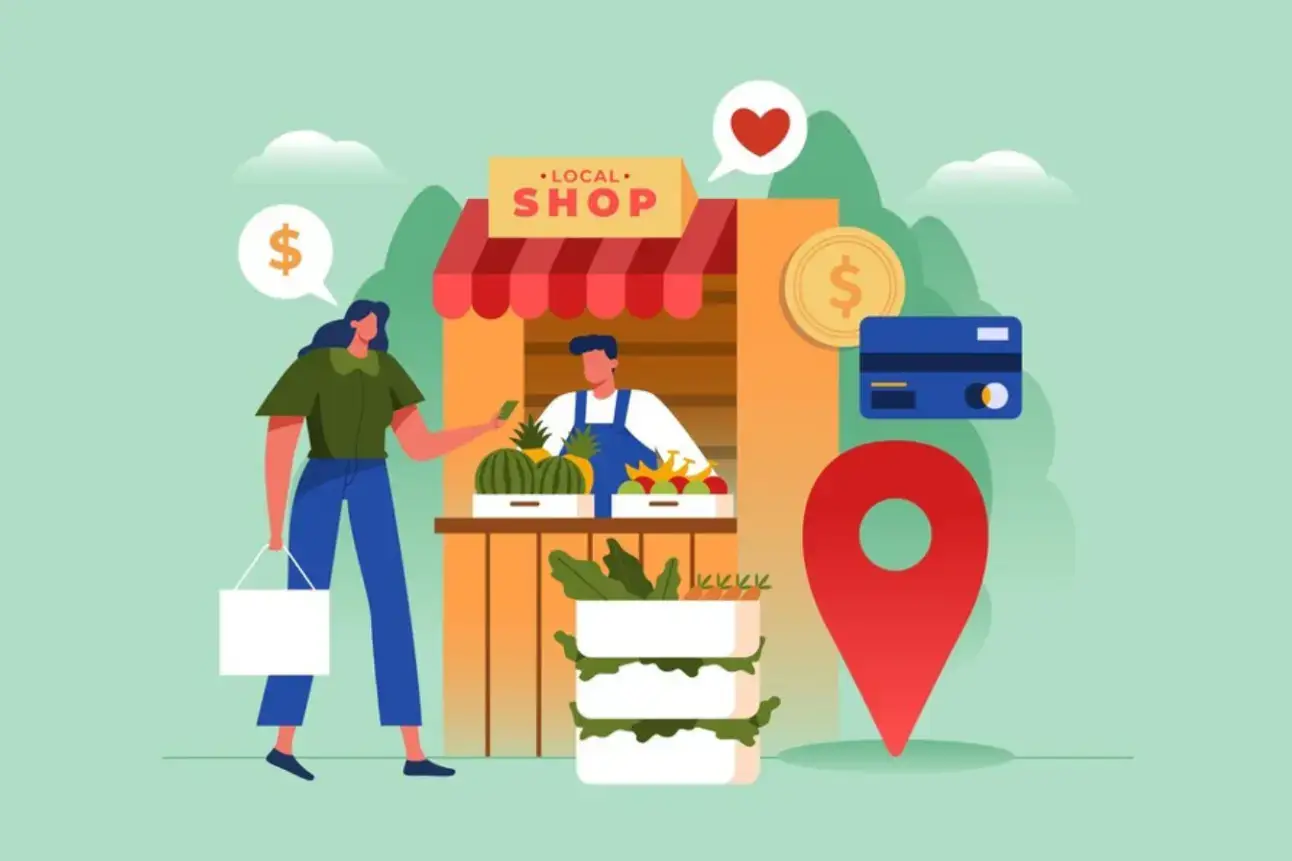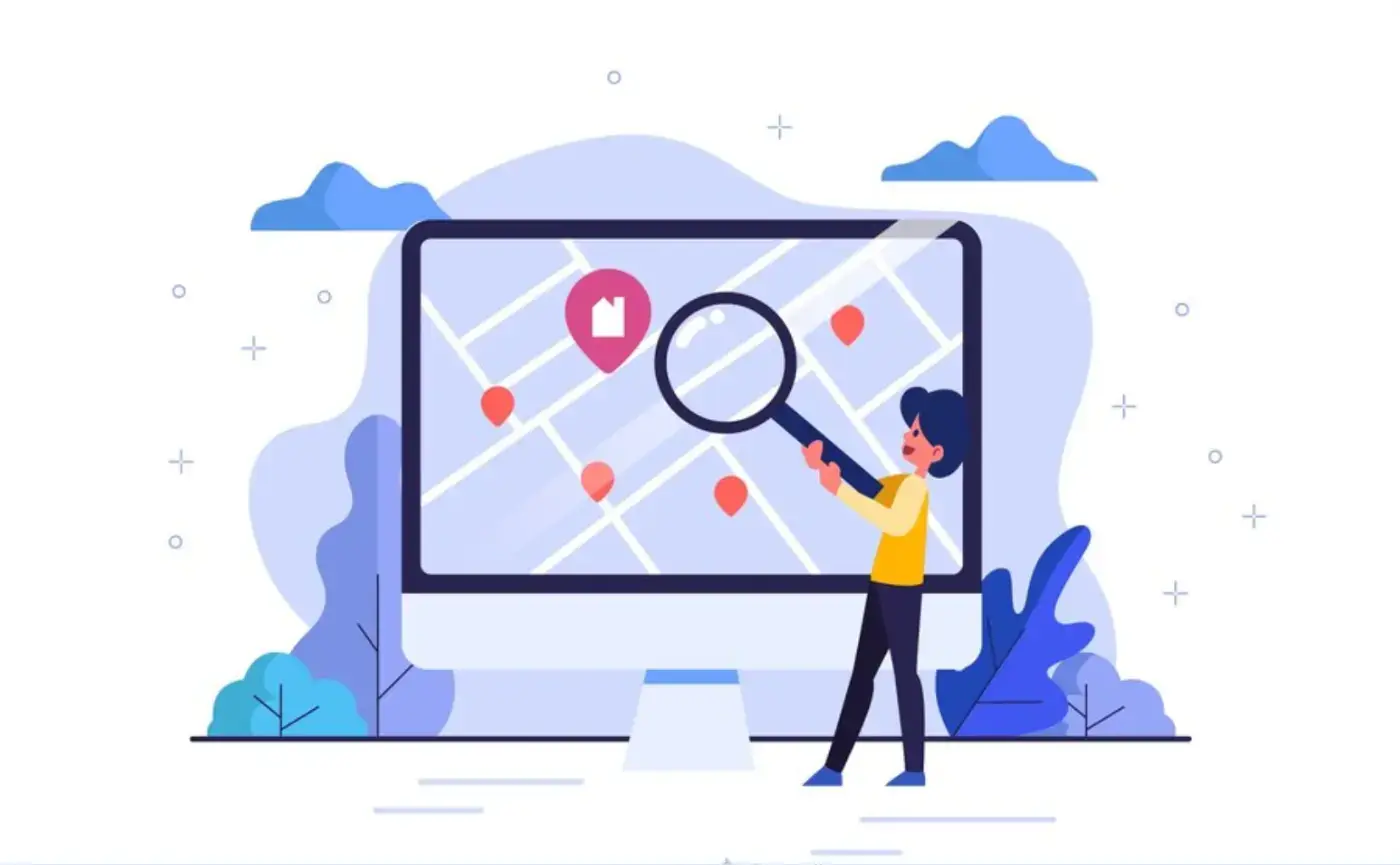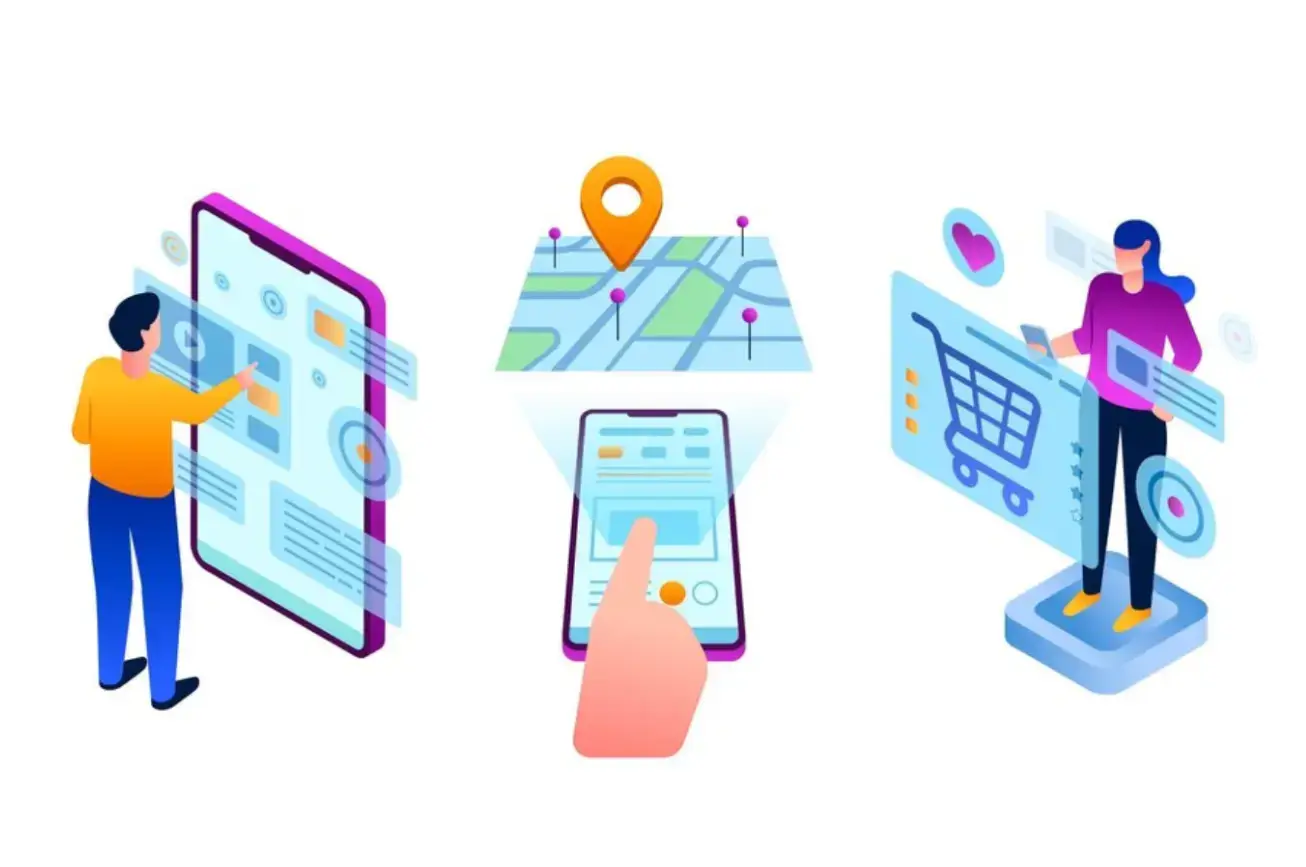Ever wonder how you always get ads relevant to your location? You may have received a discounted voucher from a nearby pizza store or a sale alert from your favorite outlet at the nearby mall. This is the power of geo-targeted ads!
Geotargeting allows businesses to target customers by their location. It's a game-changing strategy that enables companies to reach specific customers locally based on their geographic location.
Article Shortcuts:
- What is Geotargeting Marketing?
- Geotargeting Marketing Benefits for Local Businesses
- Geotargeting Marketing on Social Media
- Social media platforms for geotargeting
- Crafting location-specific content for social media
- Measuring the impact of geotargeted social media campaigns
- Geotargeted User-Generated Content (UGC) ads
- Local influencer partnerships
- Utilizing local events and trends
- Using international numbers
- Incorporating geotargeted chatbots
With the overflow of ads and constant marketing media bombardment, users pay little heed to generalized ads. However, personalized ads tend to grab the most attention. Geo-marketing enables marketers to tailor their ads for maximum success and only direct them where they will make the most impact.
This article will discuss how local marketing can be used with geo-targeting strategies to help boost local businesses.
What are Local Customers?

Source: Freepik
Customers near or in a business's surrounding geographic location are called local customers. They are the main source of profits and sales for small to medium-sized businesses (SMEs), and understanding their needs is essential.
Local customers are essential to sustainable growth as they are easier to convert and can be loyal patrons, offering a steady stream of business. By focusing on local customers, SMEs can strengthen their connection with the community, drive foot traffic to physical locations, or encourage local online sales.
How to Understand Your Local Target Audience
Successfully geo-targeting customers requires extensive research and groundwork. Businesses must first evaluate their local target audience's needs, preferences, pain points, and behaviors to effectively engage them.
This research and information gathering can be done by conducting mass surveys in the location, hosting community events, investing in market research, or actively seeking customer feedback online and offline.
The size of your local target audience can vary greatly depending on your business. For example, the local audience for a fast-food chain will be significantly larger than a luxury boutique's.
This is because the fast-food chain has a wider demographic compared to a luxury boutique, whose customers are limited to a certain age, taste, and financial resources.
If you plan to start an online boutique, you can expand beyond local limitations and reach niche customers globally, catering to specific tastes, age groups, and financial resources.
What is Geotargeting Marketing?

Source: Freepik
Geotargeting allows SMEs to personalize their online marketing campaigns and ads to certain geographic locations. This makes the marketing efforts more focused, direct, and relevant, thus highly effective in conversions and sales.
Different methods are used to utilize geotargeted marketing. Businesses can use data from WiFi networks, GPS, IP addresses, and smartphones to approximate locations of potential customers.
You can also combine geotargeting with other marketing strategies, such as demographic and behavioral targeting, to create highly sophisticated and precise campaigns.
By understanding where customers are, who they are, and what they are interested in, businesses can develop a multi-faceted approach that maximizes impact.
This strategic use of geotargeting ensures that you spend your marketing budget efficiently, reaching the right people at the right time with the right message.
For instance, a booking system for a fitness center can use geotargeting to promote available class slots to users within a specific area. The fitness center can increase bookings and optimize class attendance by sending targeted notifications about class availability and special offers to nearby customers.
Geotargeting Marketing Benefits for Local Businesses
By tailoring your marketing campaigns to specific locations, you can reach local customers with messages that truly resonate, ultimately boosting your chances of converting leads and landing sales.
Let's highlight some of the main benefits of location-targeted marketing.
-
Reduce advertising costs
Geotargeted marketing reduces advertising costs by focusing your budget on the most relevant audience. Instead of spending money on broad, generalized campaigns, you can target specific locations where your products or services are most likely needed.
This ensures that every dollar spent reaches potential customers who are more likely to convert, making your advertising more cost-effective.
You also minimize wasted impressions by narrowing down your audience to a particular geographic area. Ads reach only those within a certain radius or specific region, reducing the chances of your message being seen by people who are unlikely to take action.
Additionally, geotargeted marketing allows for better allocation of resources. By analyzing the performance of your ads in different locations, you can identify which areas yield the best results.
You can then shift more of your budget to these high-performing regions, further optimizing your ad spending and reducing unnecessary costs.
-
Personalized user experience
The more you tailor your ads and marketing to your customers' needs, the more effective they will be. Geotargeting allows you to create ads relevant to your customers by location.
Personalized content like landing pages, social media ads, and marketing campaigns captures attention and drives higher conversion rates. Customers feel understood and valued by a brand that speaks directly to their unique needs and circumstances.
By using geotargeting, businesses can dynamically adjust their messaging to reflect local trends, events, or seasonal changes, further aligning their offerings with the interests of their audience.
-
Boost local SEO rankings
While organic and local SEO are important for a successful online marketing strategy, local SEO specifically helps to attract local customers, especially for businesses with physical stores. It involves optimizing your online presence to appear in location-based searches, driving customers to your physical location through online geotargeted marketing.
To effectively reach local customers, businesses should fine-tune their websites by incorporating location-specific keywords, establish and consistently update a Google My Business profile, and actively encourage customers to leave positive reviews.
Integrate geographical terms into meta titles, descriptions, and blog posts to enhance your business’s association with specific locations. This will make it easier for search engines to connect your business to those areas.
Additionally, using POWR’s apps, like the Form Builder or Popup, you can efficiently collect local leads’ information, helping improve your local SEO efforts by engaging users directly within your geographic area.
Geotargeted Marketing on Social Media
Using geotargeted marketing can also help you elevate your social media marketing.
To craft an effective geo-targeted social media campaign, it's key to pinpoint the locations and preferences of your target audience in that location.
Let's elaborate on some of the main aspects of geotargeted marketing on social media and how to utilize them.
-
Social media platforms for geotargeting
Social media platforms offer many tools for implementing comprehensive geo-targeting strategies. Use the location-based LinkedIn, Facebook, Instagram, and X (Twitter) features to tailor your ads and content to specific geographic areas.
These platforms have built-in precise targeting tools, which allow you to reach users based on their location, interests, and behaviors.
However, if you're looking for more control and customization, you might consider making your own social media app, which enables you to tailor every aspect of the user experience to your specific needs.
Most platforms offer social media marketing features that allow you to create location-specific posts and promotions. This includes features such as location tags, geofencing, and targeted ad placements to help drive engagement and foot traffic by promoting area-specific offers and events.
-
Crafting location-specific content for social media

Source: Freepik
Amplify your geotargeting's efficacy significantly by translating web content and marketing materials into the region's language.
Businesses tailor their messages to the local language and create a more relatable and engaging experience for their audience. This approach goes beyond mere translation as it involves understanding cultural nuances and preferences that resonate with local customers.
For example, a promotional campaign in a predominantly Spanish-speaking neighborhood would be far more effective if the ads, website, and customer support were all available in Spanish. This shows respect and understanding of the local culture and removes language barriers that could impede potential sales.
Additionally, multimedia localization makes geo-targeted marketing even more powerful. Adapting videos, images, and audio to local cultures and languages ensures that content resonates with audiences, boosting engagement and conversions.
-
Measuring the impact of geotargeted social media campaigns
One of the main steps in a successful geotargeted campaign is measuring its success through analytics and KPIs. Periodically reviewing these helps keep geo-targeted marketing campaigns flexible and responsive to audience preferences.
This data-driven approach emphasizes the role of analytics in shaping successful marketing strategies and showcases how geo-targeting can boost business goals and social media impact.
Marketers can then analyze metrics, such as increases in engagement, conversion rates, effectiveness of different lead generation channels, and audience demographic shifts.
-
Geotargeted User-Generated Content (UGC) ads
User-generated content (UGC) is a powerful marketing tool that can help you create authentic ads that relate to the audience. When coupled with geotargeting, UGC ads can send highly personalized and impactful messages that resonate deeply with local audiences, driving engagement, loyalty, and sales.
UGC ads leverage content created by real customers, such as reviews, photos, or videos, showcasing genuine experiences with your product or service. This type of content resonates deeply with potential customers, as it provides social proof, lends credibility, and builds trust.
UGC marketing campaigns driven by geotargeting efforts can ensure that the right audience sees the ads. For instance, a local coffee shop can use UGC from customers who frequent their specific location and target those ads to users within the same vicinity.
This strategy boosts engagement and fosters a sense of community among local customers.
-
Local influencer partnerships

Source: Freepik
One surefire way to establish a strong sense of community in your customers and audience is to partner with local influencers and celebrities.
As these individuals have built trust and a following in their area, they can act as authentic advocates for your brand, helping to promote your products or services to a highly engaged audience through influencer marketing.
Choose influencers who resonate with your target demographic to create genuine content tailored to the community and the geotargeted region.
Whether through social media posts, event appearances, or co-created content, these partnerships can drive significant engagement and foster stronger connections with potential customers.
-
Utilizing local events and trends

Source: Freepik
Local events play a significant role in establishing deeper connections with your customers and audience.
Community events like sponsoring sports matches, festivals, or exhibitions can increase brand awareness and establish a deeper, more profound relationship with your customers.
These events provide face-to-face interaction, allowing businesses to build trust and loyalty in the community. And aligning your marketing campaigns with local trends or seasonal events can create timely and relevant content that resonates with your audience.
Whether launching a summer-themed product during a local beach festival or offering holiday discounts during a Christmas celebration, these strategies help you stay top of mind with your customers.
-
Using international numbers
In addition to using geotargeting to craft location-specific marketing campaigns, businesses can further strengthen their local presence by using international phone numbers.
Setting up a local number can make it easier for potential customers in different regions to connect with your business. This enhances customer trust and ensures that your communication strategy aligns with your geotargeting efforts.
For example, if you're running a campaign in a specific country or region, having a local phone number can make your business appear more accessible and trustworthy to local customers.
This can be particularly effective in niches where customers prefer to communicate by phone.
-
Incorporating geotargeted chatbots

Source: Freepik
Chatbots allow real-time engagements between businesses and potential customers without any wait time. Implementing geotargeting can further enhance customer engagement and support.
Imagine your customer service chatbots providing immediate assistance and personalized recommendations according to customers' locations—giving directions to nearby stores, offering area-specific promotions, suggesting regional products, or sending invites to local events and happenings.
This level of personalization will help you keep your customers happy and engaged.
Optimizing Your Local Marketing with Geotargeting
Mastering the art of geotargeted marketing is not just an advantage—it's a necessity for implementing cost-efficient and effective marketing strategies.
Through geotargeting, businesses can reach their ideal customers within specific geographic locations, enhancing the relevance and impact of their marketing campaigns.
This strategic approach ensures that marketing efforts are well-spent on uninterested audiences but focus on those most likely to engage and convert.
As you refine your geotargeted marketing strategies, consider incorporating POWR’s Notification Bar and Countdown tools.
The Notification Bar plugin enables you to effortlessly share critical updates, promote sales, or capture emails directly on your website, ensuring every visitor stays informed about the most relevant information. This boosts engagement by keeping your audience connected and up-to-date.
POWR’s Countdown Timer plugin adds a dynamic countdown to your site, creating urgency around sales, product launches, or events. This not only captures attention but also motivates faster decisions, ultimately increasing conversions and reducing bounce rates.
As the marketing industry evolves, integrating geotargeting with multi-faceted data will become increasingly essential. Stay ahead of the curve by embracing these strategies now.


